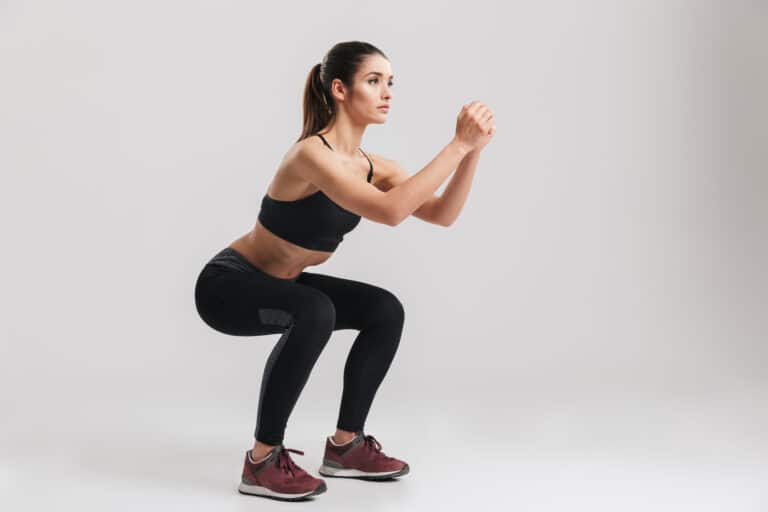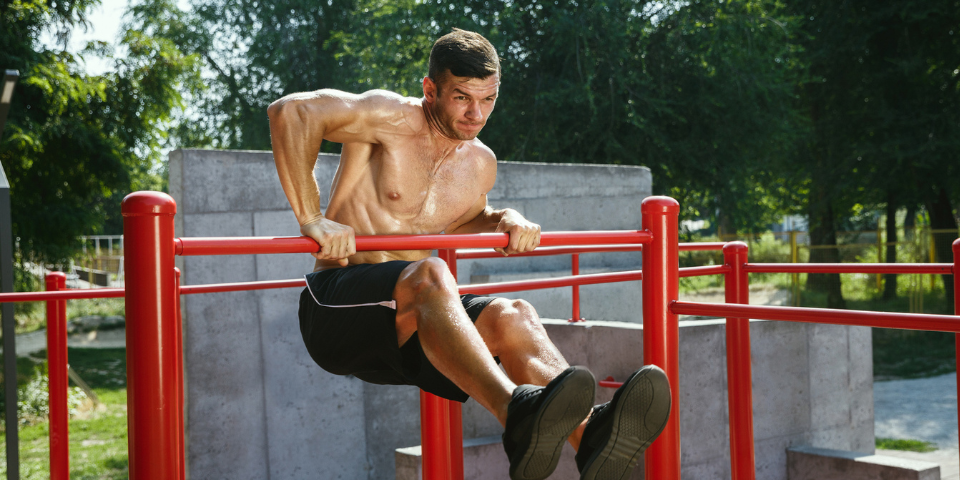Does Stretching Sore Muscles Actually Help the Pain Go Away?

All products are independently selected by our editors. If you buy something, we may earn an affiliate commission.
You’re getting out of the car after a long drive, or up from your computer after a stressful workday, and there it is—that tight, achy feeling in your neck. Your first instinct is to pull your head toward your shoulder, trying to lengthen your stiff, sore muscles.
We’ve all been told stretching is a great way to keep your body loose and limber and ward off any potential achy tightness. But does doing it when you’re already hurting actually help you—or are there better ways to soothe the soreness instead? We tapped physical therapists, sports medicine doctors, and strength coaches to break it all down.
The answer depends, in part, on why your muscles hurt in the first place.
To know whether stretching sore muscles could benefit you, it helps to understand what’s behind that ache, board-certified sports physical therapist Leada Malek, DPT, CSCS, author of the book Science of Stretch, tells SELF. There are three things to keep in mind:
- Your muscles might be weak.
- Your range of motion might be restricted due to chronic tightness.
- Your muscles may have been (micro)damaged due to a tough workout.
Let’s take the first one. Simply holding your body in a fixed position—say, screen time or a long drive—can fatigue your muscles, making them feel stiff or sore, since they’re working hard to hold that position. The less strength and endurance your muscles have, the more prone you are to this kind of pain, she says.
Secondly, you might also feel pain in your neck (or other areas) because your muscles have shortened or tightened over time, decreasing your range of motion, or how far you can move your muscles or joints in the directions they’re supposed to go. For instance, the more time you spend hunched over screens, the less flexibility you might have in the muscles around your neck and shoulders.
Finally, if you’ve just completed a tough workout, you might be dealing with delayed onset muscle soreness, or DOMS. When you exercise for the first time in a while or change up your routine, you can cause minor damage or microtrauma to your muscle fibers, Susie Reiner, PhD, CSCS, certified exercise physiologist and postdoctoral researcher at the University of Kentucky’s Sports Medicine Research Institute, tells SELF. In healthy muscle, small threadlike components called actin and myosin neatly line up next to each other. With DOMs, “all of the actin and myosin are jumbled together,” Dr. Reiner says. This triggers an inflammatory response, which further increases pain and stiffness.
Stretching, when appropriate, can help in a few different ways.
When you’re performing a static stretch—say, you’re holding a position for a set amount of time—you’re pulling those actin and myosin threads apart, lengthening your muscles, Dr. Reiner says. When you’re dealing with minor stiffness and pain, stretching sore muscles can increase your mobility and range of motion in the moment, allowing you to move more freely. Done regularly, it can preserve that range of motion and keep your muscles more flexible and prepared to handle the challenges of your day.
Breaking up sedentary or repetitive activities with stretch breaks can prevent the accumulation of fatigue and tension that causes soreness in the first place. In addition, gentle movements such as active stretches increase blood flow and body temperature, warming up your muscles while easing tightness and tension, Mathew Welch, MS, CSCS, ATC, an exercise physiologist on the Sports Rehabilitation and Performance Team at Hospital for Special Surgery in New York, tells SELF.
It can also be a psychological boon too. Pain is much more complicated than simply the state of your muscle fibers or blood chemistry, Welch says. Stress can amplify the “ow, that hurts” messages shooting from body to brain; shallow breathing can add to the tension. And sometimes, dwelling on pain can ultimately intensify it. “If stretching for a few minutes allows you to take time to center yourself and take some deep breaths, that alone can actually impact pain signals,” Dr. Malek says.
So when should you stretch if you’re feeling sore?
For muscles that have simply tightened or shortened over time and decreased your range of motion, stretching is likely to be beneficial as long as it doesn’t cause more pain, Cayce Onks, MS, DO, professor at Penn State College of Medicine and a primary care sports medicine physician, tells SELF.
But if you’re feeling achy because your muscles aren’t strong enough to hold a fixed position, a static stretch might not be the right fix by itself, Dr. Malek says. Dynamic stretches, on the other hand, which combine flexibility with movement to take your joints through a greater range of motion instead of just lengthening them, might be better since they activate your nervous system to improve the coordination between your mind and your muscles. (A more targeted strengthening routine for the area in question would also likely be helpful.)
Problem is, telling the difference between these two isn’t always easy, Dr. Malek says. But there are some factors that can help tease it out: If it feels like your neck is tired, your head feels “heavy” or like it’s hard to hold up, that could be weakness instead of tightness. Another clue is to try a stretch. Say you’re dealing with nagging soreness in your hamstring. If you can find a way to stretch it that improves things, it’s likely because your muscles were just tight or stiff, Welch says. But if you can’t, or if the relief doesn’t last, that points back to weakness: “That tells me that person actually needs to strengthen that hamstring.”
But there are times when stretching isn’t the best idea.
For one, if you have DOMS, static stretching likely isn’t the answer either. That’s because all that actin and myosin are jumbled up, making it difficult, if not impossible, to pull the muscle longer. And if you’re too aggressive in trying, you might even cause more microdamage to your muscles, which could prolong the pain, Dr. Reiner says.
Stretching probably won’t help—and might hurt—if you have an acute muscle strain. For example, if your hamstring suddenly begins to throb while you’re running or kicking a soccer ball, steer clear of stretching at first. “Usually those muscle fibers have gotten overstretched or they got stretched too quickly, beyond what they were able to tolerate from a given movement,” Welch says. “Adding more pulling tension on the muscle fibers is only going to exacerbate what’s going on.”
Nerve pain is another case in which you might want to steer clear of stretching, or at least modify your approach, Dr. Malek says. If aches or tightness are accompanied by numbness or shooting, stabbing pain, one or more nerves are probably being pinched or squeezed. Stretching might trigger or exacerbate those sensations by further aggravating the nerves. “That’s something I see a lot,” she says. Patients will say, “‘It’s just this weird pain I can’t quite figure it out. It’s deep, it’s dull, and it feels like I need to stretch but can’t quite get to it.’”
Also, proceed with caution if you have chronic conditions that affect your muscles or joints, Dr. Onks says. For example, if you have arthritis in your knees, stretching the surrounding muscles isn’t likely to restore your range of motion or ease your pain, he says. That doesn’t mean you shouldn’t do it at all—in fact, it could be beneficial in the long run—but you may just need some modifications to make it work for you, and it’s often a good idea to do strengthening exercises too.
Finally, if your pain interferes with daily function and stretching or other forms of self-care don’t do the trick, it’s a good idea to seek medical treatment, Welch says. Good options include orthopedic physicians, physiatrists (who specialize in treating pain and physical impairments), or physical therapists. They can evaluate the underlying cause and help you create a plan to address it.
But even if stretching won’t fix your problem, you have lots of other options for something else that will.
In cases in which stretching isn’t recommended—or it doesn’t ease your pain on its own—relief is still possible! Heat can help ease tightness and improve range of motion by boosting blood flow and loosening muscles, Dr. Malek says. Just proceed with caution if you have an actual injury, especially a new one; in some cases, heat can increase inflammation or worsen pain.
You can also address tight or sore muscles with foam rolling or massage guns. In addition to boosting blood flow, this provides “some actual compression to the area to help, the same way a massage therapist would put their hands on you and apply some pressure to help provide a little bit of release,” Welch says. (These methods could also help with pain that results from fatigue due to weakness in the short term, but you’ll still want to strengthen those muscles to prevent it from returning, Welch says.) The right tool and exactly how to use it depends on where your soreness resides. Foam rollers are good for larger areas, such as the quads or calves, while massage guns can help in spots that are tougher to reach, such as between the shoulder blades. Just steer clear of your neck; point them there and you’ll risk damaging sensitive tissues like your carotid arteries or lymph nodes.
If you’re dealing with DOMS, you’ve got a couple additional options. Pneumatic compression boots fill up with air and can increase circulation and either prevent or ease soreness post-workout, Dr. Reiner says. So can gentle movement, such as swimming, easy cycling, or walking. In fact, light cardio can help with other types of muscle pain too, and there’s often an add-on psychological benefit: “Going for a walk outside could completely distract you from pain,” she says. “There are so many different things that you could do to improve the issue. It really comes down to the individual and what works for them.”
Bottom line: Stretching is one tool for stiff, sore muscles, but it shouldn’t be the only one.
Every once in a while, Welch performs a single stretch on an athlete in pain, and that person experiences relief. But more often than not, stretching is just one part of a multifaceted approach to easing tension and soreness, he says.
So except in the few red-flag cases mentioned above, it probably won’t hurt—and could help—to give stretching a shot. “If you find a stretch that actually offers relief and doesn’t feel like you have to keep chasing it with more stretches, then that’s a good thing to keep in your routine,” Dr. Malek says. “It comes down to, does it feel good for you, and does it feel like it stays productive so that you can go through the rest of your day? Or do you feel like it’s good in the moment, but the minute you stop, you have to get back to it again? If so, that might not be the best option.” Instead, you can explore techniques like strengthening, foam rolling, or massage guns, or consult an expert like a physical therapist for an “ah, that’s better” sensation that lasts.
Related:
- The 24 Best Stretching Exercises for Better Flexibility
- 16 Hip Stretches Your Body Really Needs
- 15 Gentle Lower Back Stretches to Help Relieve Your Pain
Get more of SELF’s great fitness coverage delivered right to your inbox—for free.





